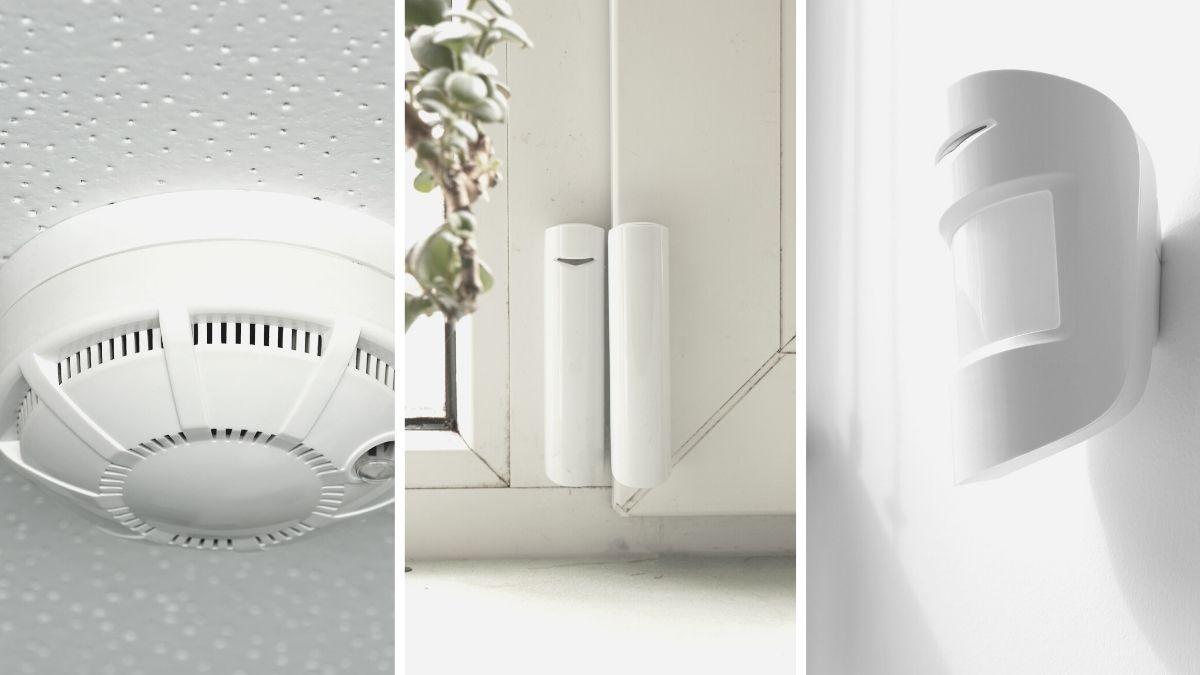
These devices act as the central nervous system of your smart home
A house is considered “smart” when it has the capacity to adjust to various circumstances inside your home through sensor technology. These sensors track a variety of factors such as temperature, humidity, light, UV, sound, smoke, water, and movement, offering a reliable and effective system for managing responses.
This is true home automation and with these extra senses, you can program sophisticated scenes and routines to make your life easier and your home more secure!
I have over 50 sensors connected in my Hubitat instance so have a lot of experience in installing and configuring these. In this article, I discuss what a smart sensor is, typical sensors you’ll find in a modern smart home, considerations when deploying smart sensors, and a list of the best sensors available today.
Top Tip: To save money, it’s best to buy “Multi-Sensors” like the Aeotec 6-in-1 Multi-Sensor as opposed to individual sensors for each function!
What is a Smart Sensor?
A smart sensor, in the context of a smart home, is an advanced type of sensor that can collect, process, and communicate information about its environment to other devices or systems. It typically has a level of intelligence, connectivity with other devices, and self-monitoring capabilities, which make it an integral part of a smart home ecosystem.
Smart sensors can detect various parameters such as temperature, humidity, motion, light, sound, and air quality.
These sensors usually communicate with other devices and systems using wireless protocols such as Wi-Fi, Zigbee, Z-Wave, or Bluetooth. They can be integrated with smart home platforms, like Amazon Alexa, Google Home, Apple HomeKit, SmartThings, or Hubitat allowing homeowners to control and monitor their smart home devices using voice commands or mobile apps.
20 Best Smart Home Sensors
Below are the main smart home sensors you can deploy to enable your smart home hub to know what’s happening in your home.
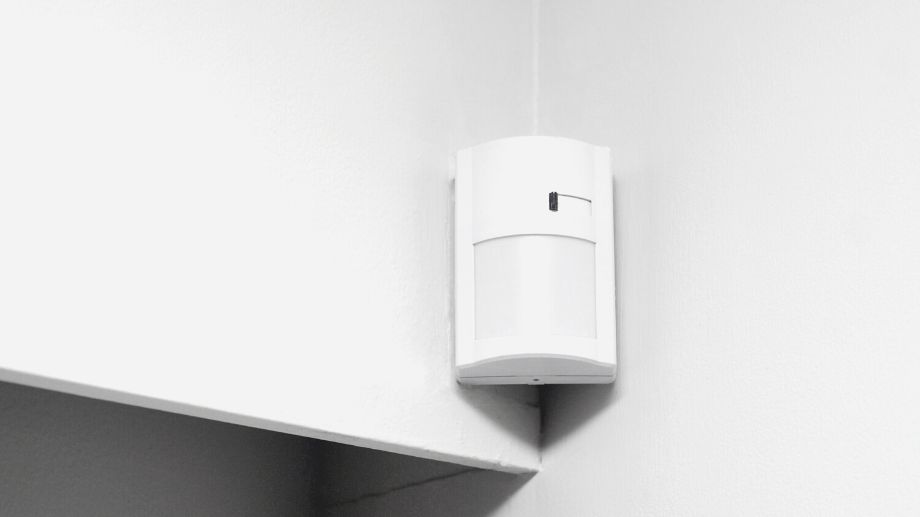
1. Motion Sensors
Motion sensors detect movement within a specific area and are often used for security, lighting control, and energy management.
They typically work using passive infrared (PIR) technology, which senses changes in infrared radiation emitted by objects in their field of view. When motion is detected, the sensor can trigger actions like turning on lights or sending notifications.
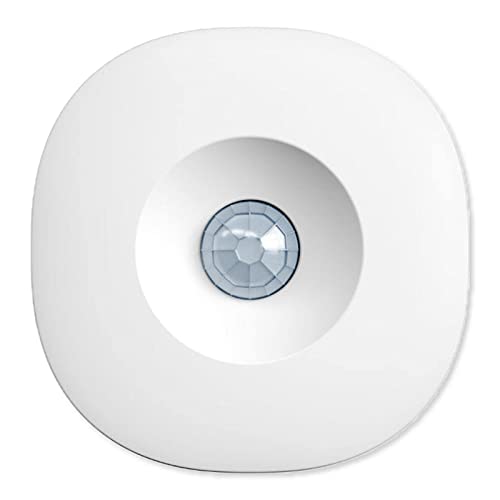
Example products include the Philips Hue Motion Sensor and the Samsung SmartThings Motion Sensor.
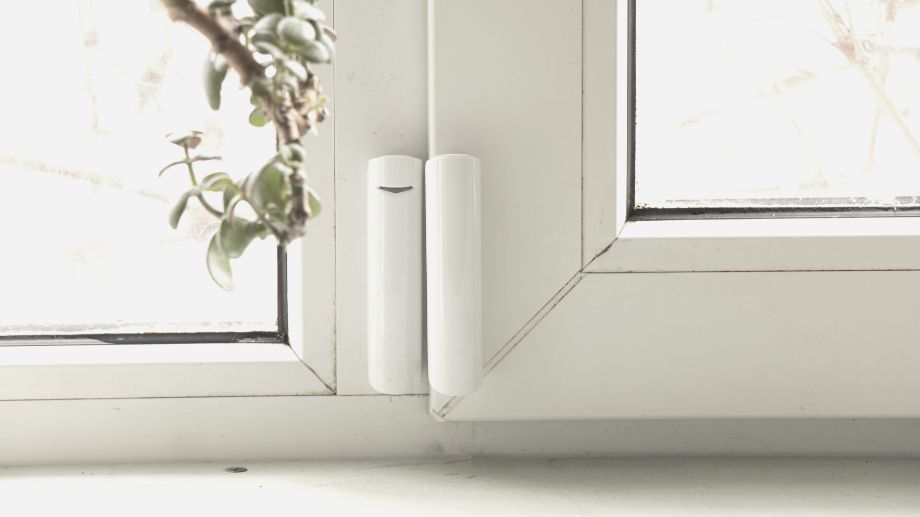
2. Door/Window Sensors
Door and window sensors monitor the opening and closing of doors and windows, providing security and automation capabilities.
They usually consist of two parts: a magnet and a sensor. When the magnet and sensor are separated (i.e., when the door or window is opened), the sensor sends a signal to the hub or other connected devices.
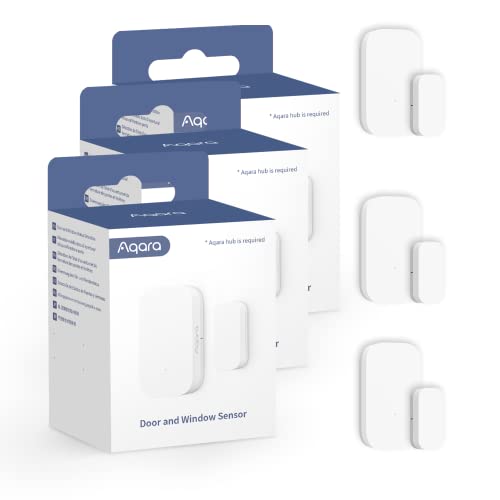
Example products include the Ring Alarm Contact Sensor and the Aqara Door and Window Sensor.
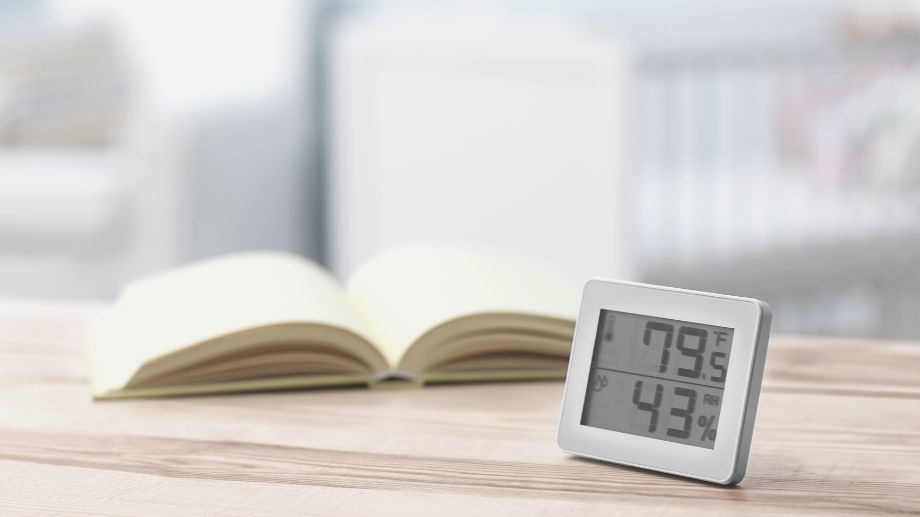
3. Temperature and Humidity Sensors
These sensors monitor the ambient temperature and humidity in a room, enabling climate control and energy management.
They work by using electronic components that change their resistance or capacitance based on the temperature and humidity levels. The sensor readings can be used to control heating, cooling, or ventilation systems.
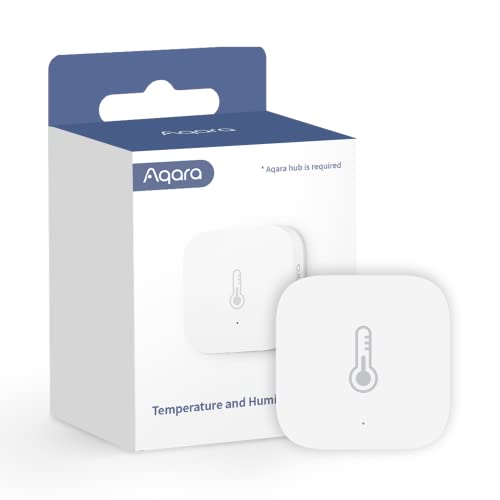
Example products include the Ecobee SmartSensor and the Airthings Wave Mini.
4. Smoke and Carbon Monoxide (CO) Detectors
These safety devices detect the presence of smoke or carbon monoxide in the air, alerting occupants and triggering emergency responses.
Smoke detectors typically use photoelectric or ionization technology, while CO detectors use electrochemical sensors.
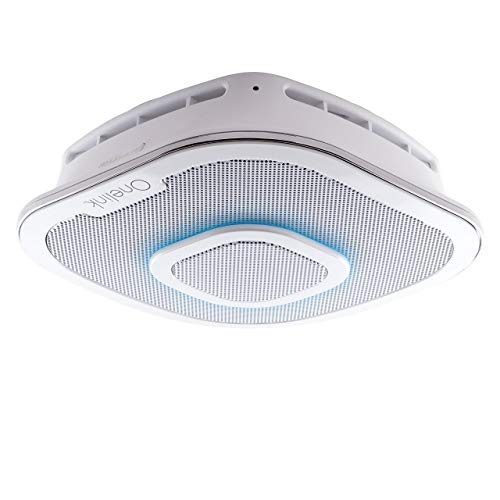
Example products include the Nest Protect Smoke and Carbon Monoxide Alarm and the First Alert Z-Wave Smoke/CO Alarm.
5. Water Leak Sensors
Water leak sensors detect the presence of water or moisture, alerting homeowners to potential leaks or flooding.
They usually work by using conductive probes or capacitive sensors that change their electrical properties when exposed to water.
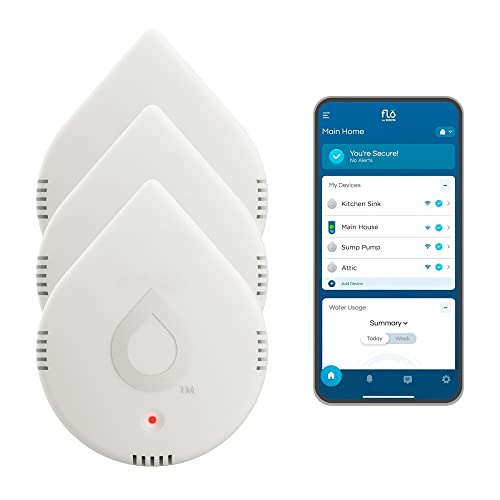
Example products include the Honeywell Lyric Wi-Fi Water Leak and Freeze Detector and the D-Link Wi-Fi Water Sensor.
6. Light Sensors
Light sensors, also known as ambient light sensors or lux sensors, measure the light intensity in a room.
They can be used to adjust lighting levels, control window blinds, or manage energy consumption. Light sensors typically use photodiodes or phototransistors to convert light into an electrical signal.
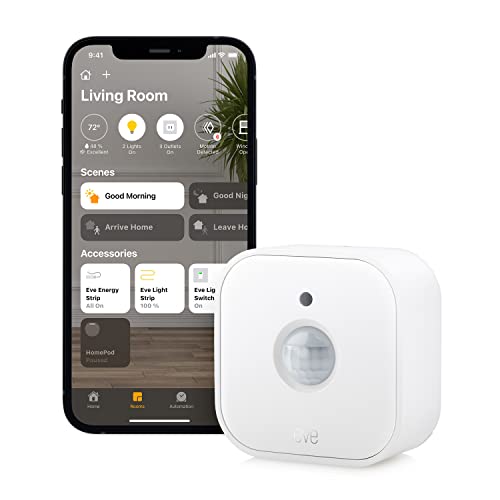
Example products include the Aeotec Multisensor 6 and the Fibaro Motion Sensor.
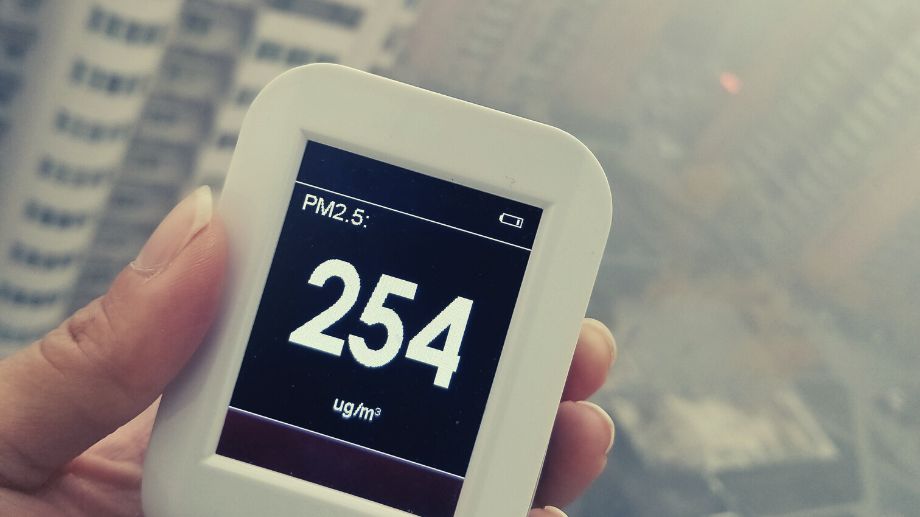
7. Air Quality Sensors
Air quality sensors monitor indoor air pollutants, such as volatile organic compounds (VOCs), particulate matter (PM), or CO2 levels.
They use various sensing technologies, like electrochemical, optical, or metal oxide sensors, to detect specific pollutants. These sensors can help maintain a healthy indoor environment by triggering air purifiers, HVAC systems, or providing notifications.
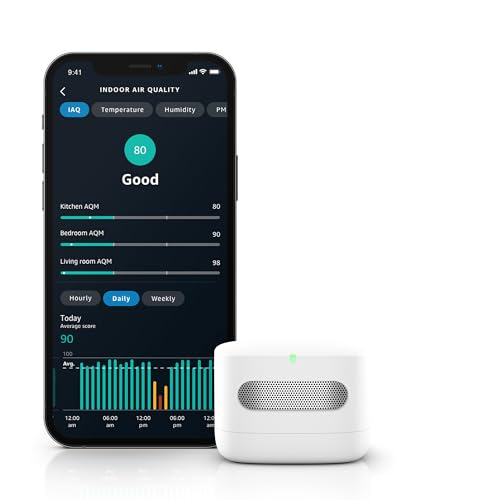
Example products include the Amazon Smart Air Quality Monitor.
8. Noise Sensors
Noise sensors, also known as sound sensors or acoustic sensors, detect and measure sound levels in a room.
They typically use microphones or piezoelectric transducers to convert sound waves into electrical signals. Noise sensors can be used for security, automation, or monitoring purposes, such as detecting glass breakage or controlling devices based on ambient noise levels.
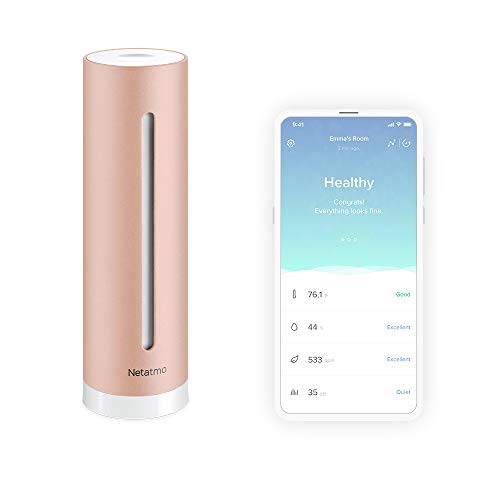
Example products include the Minut Smart Home Sensor and the SimpliSafe Glass Break Sensor.
9. Vibration Sensors
Vibration sensors detect vibrations or movements on surfaces, such as doors, windows, or walls. They usually use accelerometers, piezoelectric sensors, or strain gauges to measure vibrations.
Vibration sensors can be used for security purposes, like detecting attempted break-ins or forced entry, or for automation purposes, like sensing when a washing machine has finished its cycle.
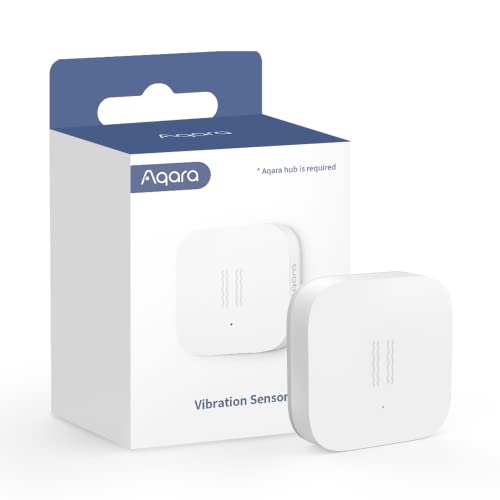
Example products include the Samsung SmartThings Multipurpose Sensor and the Aqara Vibration Sensor.
10. Energy Monitoring Sensors
Energy monitoring sensors track the power consumption of individual appliances or devices, helping users identify energy hogs and optimize energy usage.
They typically work by measuring the electrical current and voltage and calculating the power consumption. Energy monitoring sensors can be standalone devices or integrated into smart plugs or outlets.
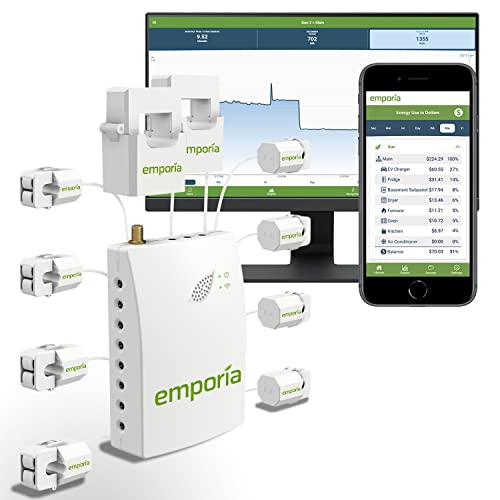
Example products include the Sense Energy Monitor and the TP-Link Kasa Smart Plug with Energy Monitoring.
11. Gas Leak Sensors
Gas leak sensors detect the presence of flammable or hazardous gases, such as natural gas, propane, or methane.
They use various sensing technologies like catalytic, infrared, or semiconductor sensors to identify specific gas concentrations. Gas leak sensors can help prevent accidents and property damage by alerting homeowners and triggering emergency responses.
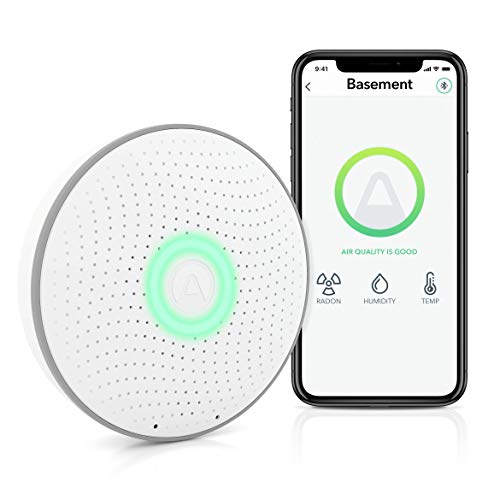
Example products include the Nest Protect Smoke and Carbon Monoxide Alarm with methane sensing capability and the Airthings Wave Plus, which can detect radon gas.
12. Occupancy Sensors
Occupancy sensors determine if a room or space is occupied by people.
They can use a combination of technologies, such as passive infrared, ultrasonic, or microwave sensing, to detect motion, body heat, or sound. Occupancy sensors can be used for energy management, security, or automation purposes, such as turning off lights when a room is unoccupied or adjusting HVAC settings based on occupancy.
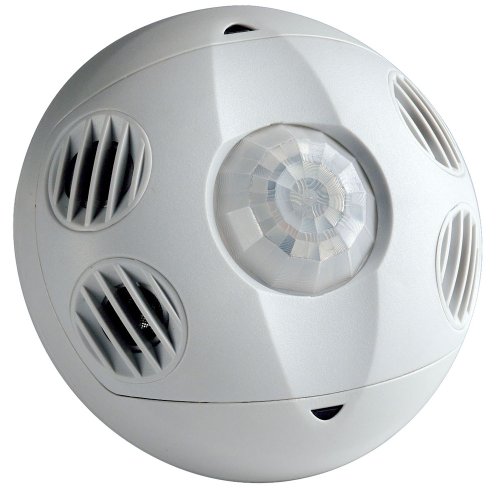
Example products include the Lutron Maestro Occupancy Sensor Switch.
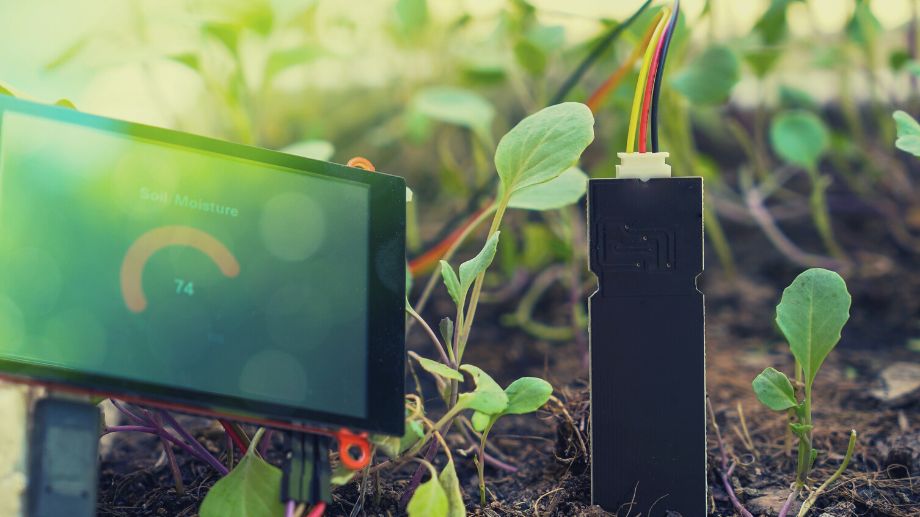
13. Soil Moisture Sensors
Soil moisture sensors monitor the water content in the soil, helping homeowners optimize irrigation and maintain healthy plants.
They typically use capacitance, resistance, or time-domain reflectometry (TDR) technology to measure the soil’s water content. Soil moisture sensors can be used to control smart irrigation systems, providing water only when needed and preventing overwatering.
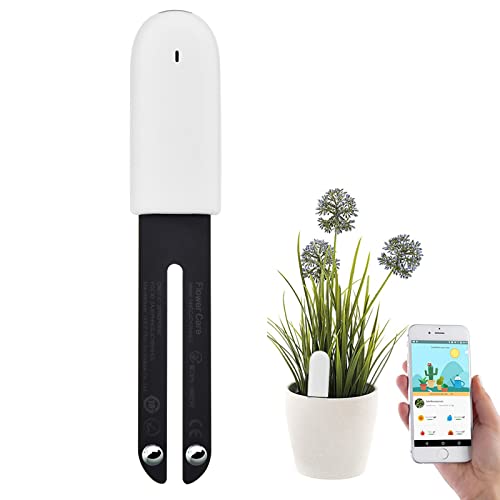
Example products include the Rachio Wireless Soil Moisture Sensor and the PlantLink Soil Moisture Sensor.
14. UV Sensors
UV sensors measure the intensity of ultraviolet (UV) radiation from the sun.
They typically use photodiodes or other light-sensitive components to convert UV light into electrical signals. UV sensors can be used to monitor sun exposure or control shading devices, such as motorized blinds or awnings, to protect the home’s interior or outdoor areas.
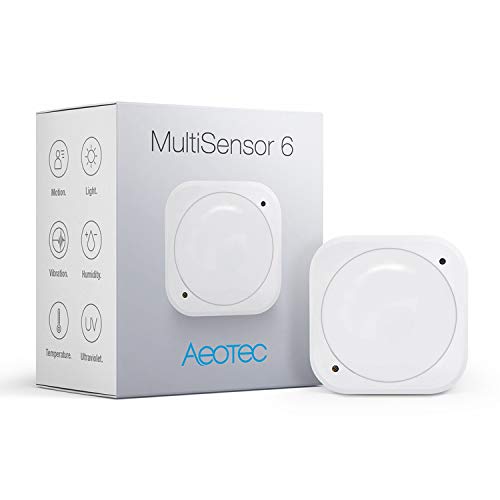
Example products include the Netatmo Weather Station, which includes a UV sensor, and the Davis Instruments Vantage Pro2 Weather Station.
15. Presence Sensors
Presence sensors, also known as proximity sensors, detect when a person or object is nearby or within a certain range.
They can use technologies like infrared, ultrasonic, or capacitive sensing to determine proximity. Presence sensors can be used for security, lighting control, or automation purposes, such as unlocking doors when the homeowner approaches or turning off devices when people leave the area.
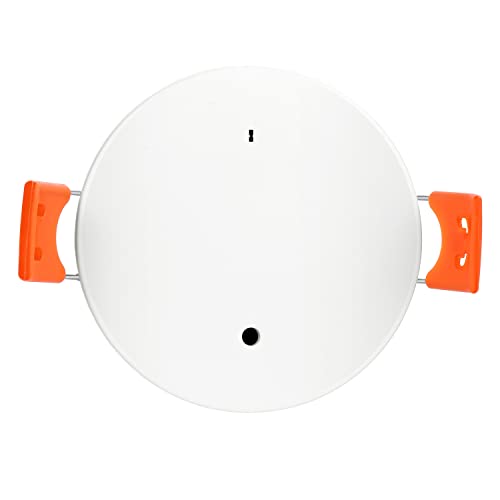
Example products include the Tuya Presence Detector.
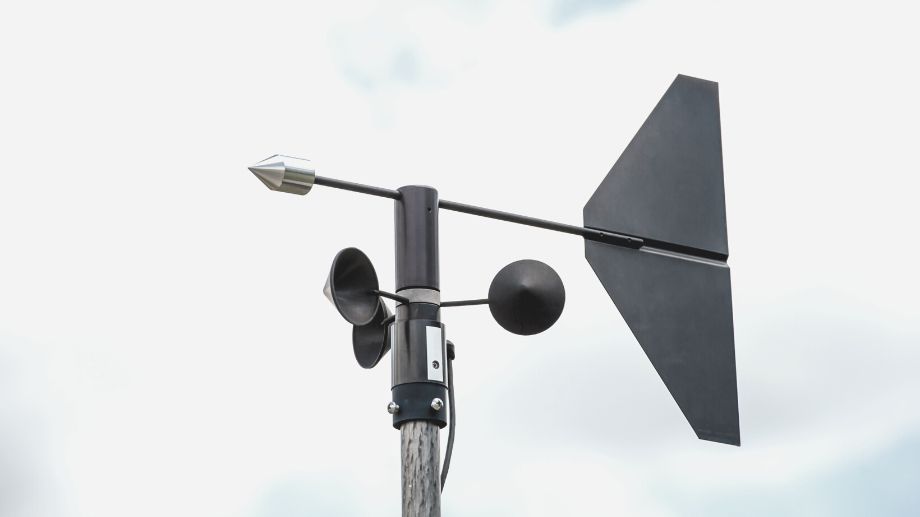
16. Wind Sensors
Wind sensors, or anemometers, measure wind speed and direction.
They can use various sensing technologies, like cup anemometers, vane anemometers, or ultrasonic anemometers, to detect wind characteristics. Wind sensors can be used in smart home systems to control outdoor devices, such as motorized awnings or smart irrigation systems, based on weather conditions.
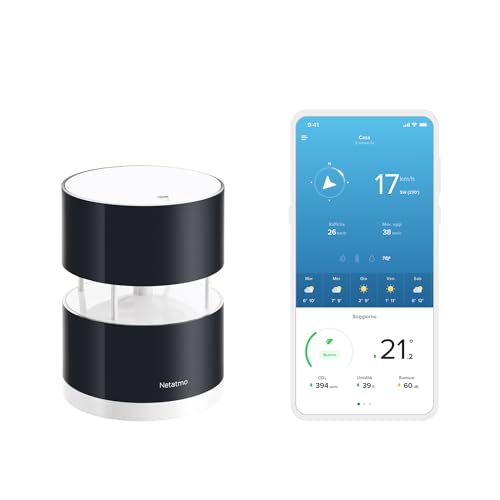
Example products include the WeatherFlow Smart Weather Station and the Davis Instruments Vantage Vue Weather Station.
17. Rain Sensors
Rain sensors detect the presence and intensity of rainfall.
They typically use tipping bucket, capacitive, or optical sensing techniques to measure rainfall. Rain sensors can be used in smart home systems to control irrigation, close windows, or retract motorized awnings based on weather conditions.
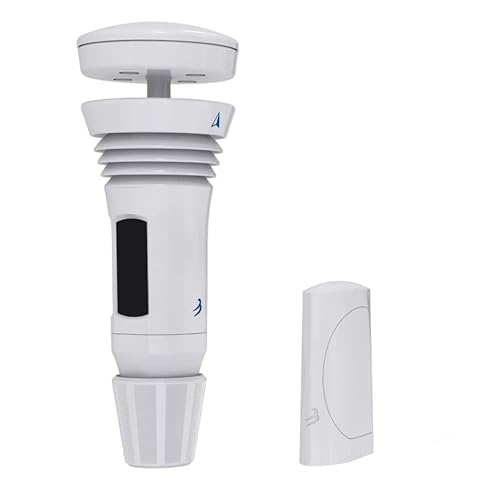
Example products include the RainMachine Smart Irrigation Controller, which uses local weather data, and the Rain Bird WR2 Wireless Rain Sensor.
18. Garage Door Sensors
Garage door sensors monitor the position and status of garage doors, alerting users if the door is left open or if unauthorized access is detected.
These sensors usually consist of two parts, a magnet, and a sensor, similar to door/window sensors. When the garage door is opened or closed, the magnet and sensor move apart or closer together, triggering the sensor to send a signal.
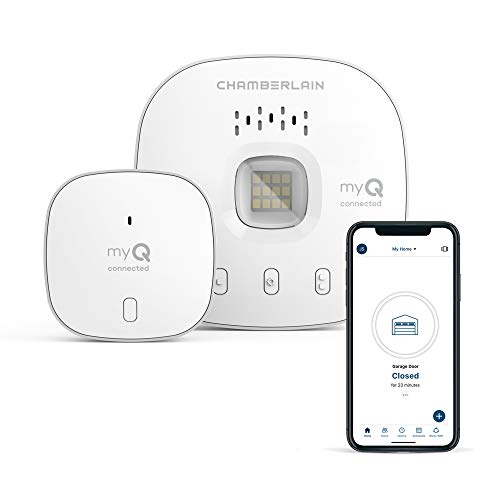
Example products include the Chamberlain MyQ Smart Garage Door Sensor and the Alcidae Garager 2.
19. Pressure Sensors
Pressure sensors measure the force applied to a surface or object, such as the weight of a person on a smart scale or the water pressure in a plumbing system.
They can use various sensing technologies, like piezoresistive, capacitive, or optical sensors, to detect pressure changes. Pressure sensors can be used in smart home systems for health monitoring, water management, or security applications.
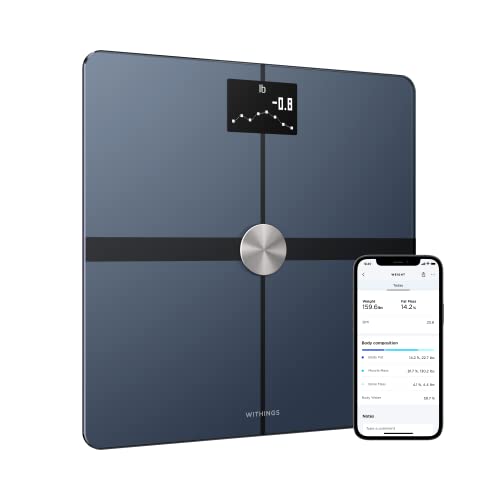
Example products include the Withings Body+ Smart Scale and the Honeywell Lyric Water Leak Detector, which can monitor water pressure.
20. Tilt Sensors
Tilt sensors, or inclinometers, detect changes in orientation or inclination, such as the position of a garage door or the angle of a solar panel.
They typically use accelerometers or gyroscope technology to measure the tilt angle. Tilt sensors can be used in smart home systems for security, automation, or energy management purposes.
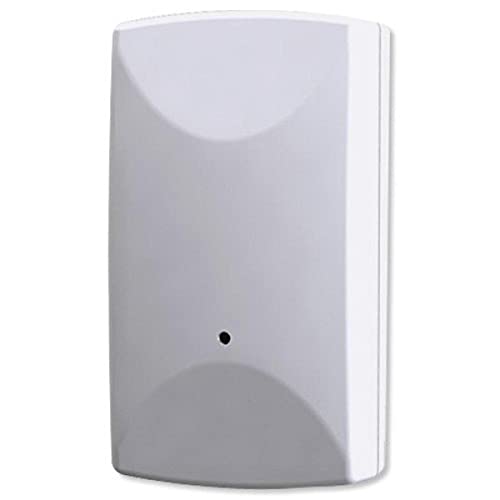
Example products include the Monoprice Z-Wave Plus Garage Door Tilt Sensor and the Aeotec Garage Door Controller, which includes a tilt sensor.
Considerations when Choosing Smart Home Sensors
Other than the sensor’s primary purpose, as discussed above, here are some key things to consider when deploying smart home sensors.
Mesh Network
The best practice is for smart home sensors to be deployed within a mesh network, like Thread, Zigbee, or Z-Wave.
The reason for this is the mesh network dramatically extends the wireless range of devices as communications can be relayed through certain devices.
Also, mesh networks tend to keep data locally and don’t rely on cloud servers.
The Matter protocol should make this easier as it uses Thread as its mesh networking layer.
Compatibility with Home Automation Platforms
Not all smart sensors are designed to work with all smart home hubs so you need to ensure that the sensor is compatible with your ecosystem. There are a few reasons for these compatibility issues.
Communication protocols
One of the primary reasons for the incompatibility between smart sensors and smart home hubs is the use of different communication protocols.
Smart devices, including sensors, use wireless protocols like Wi-Fi, Zigbee, Z-Wave, or Bluetooth to communicate with each other and the hub.
If a smart sensor uses a protocol that is not supported by the hub, they will not be able to communicate with each other. For example, a Zigbee-based sensor won’t work with a hub that only supports Z-Wave or Wi-Fi.
Proprietary platforms
Some smart home device manufacturers develop their own proprietary ecosystems, which may not be compatible with devices from other manufacturers.
This is pretty common with home security / alarm companies that sell smart sensors as part of a package.
Device-specific features
Certain smart sensors might have specific features or functionalities that are only supported by a particular hub or ecosystem. This can lead to incompatibility issues when trying to integrate the sensor with a hub that does not support those features.
For example, the Matter 1.0 standard does not include Energy Management devices. So an energy management sensor, like an energy monitor, would not be natively compatible with devices in a Matter ecosystem.
Wired or Battery Power
You’ll need to consider whether the sensor requires a wired connection to a power source or runs on batteries. Battery-powered sensors offer greater flexibility in terms of installation but may require periodic battery replacement or recharging. Wired sensors typically have a more reliable power source but may require professional installation.
Within a mesh network, battery-powered devices are usually classed as “End Devices” while wired devices can act as signal repeaters.
Tip: I ran into a problem when changing the batteries of my Z-Wave door and window contact sensors. I initially installed them too high up on the windows and doors so when it came to changing the battery, I couldn’t get a screwdriver in to unhook the front plate. I had to fully remove the contact and get new adhesive pads to stick them back on at a lower level. So, its worth watching out for when installing yours.
Range and connectivity
Double-check the sensor’s effective range and signal strength, especially if it’s a battery-powered sensor. You’ll have to make sure t can reliably communicate with your smart home hub or other devices within your home. You may need to consider adding signal repeaters or extenders if you have a large home or if the sensor is placed far from the hub. This is easier if the sensor operates on a mesh protocol like Zigbee, Z-Wave or Thread as opposed to Wi-Fi.
Accuracy
Sensors are only as good as the hardware and software the run on. Ideally, you’ll want to pick sensors that provide accurate and consistent readings so look for sensors with a proven track record of reliability.
This is particularly important for sensors that detect smoke, CO, gas, fire or water.
Local Processing & Security
Ideally, smart sensors should operate locally and shouldn’t need to connect to cloud servers. This protects your smart home system from unauthorized access or hacking. If you do use a sensor that connects to the cloud, consider the manufacturer’s privacy policies regarding data storage and sharing.
Also, look for companies that offer good customer support, firmware updates, and ongoing product improvements.
Automation
Consider the level of customization and automation options the sensor offers within your hub. Look for sensors that can be easily integrated into your smart home routines or scenes and allow you to configure settings based on your preferences.
Cost
While an individual sensor may not be expensive, deploying 30-50 sensors across your home can cost some serious cash! So you’ll need to weigh up the scenarios where you can work with budget sensors and when mid-to-high end sensors are necessary.